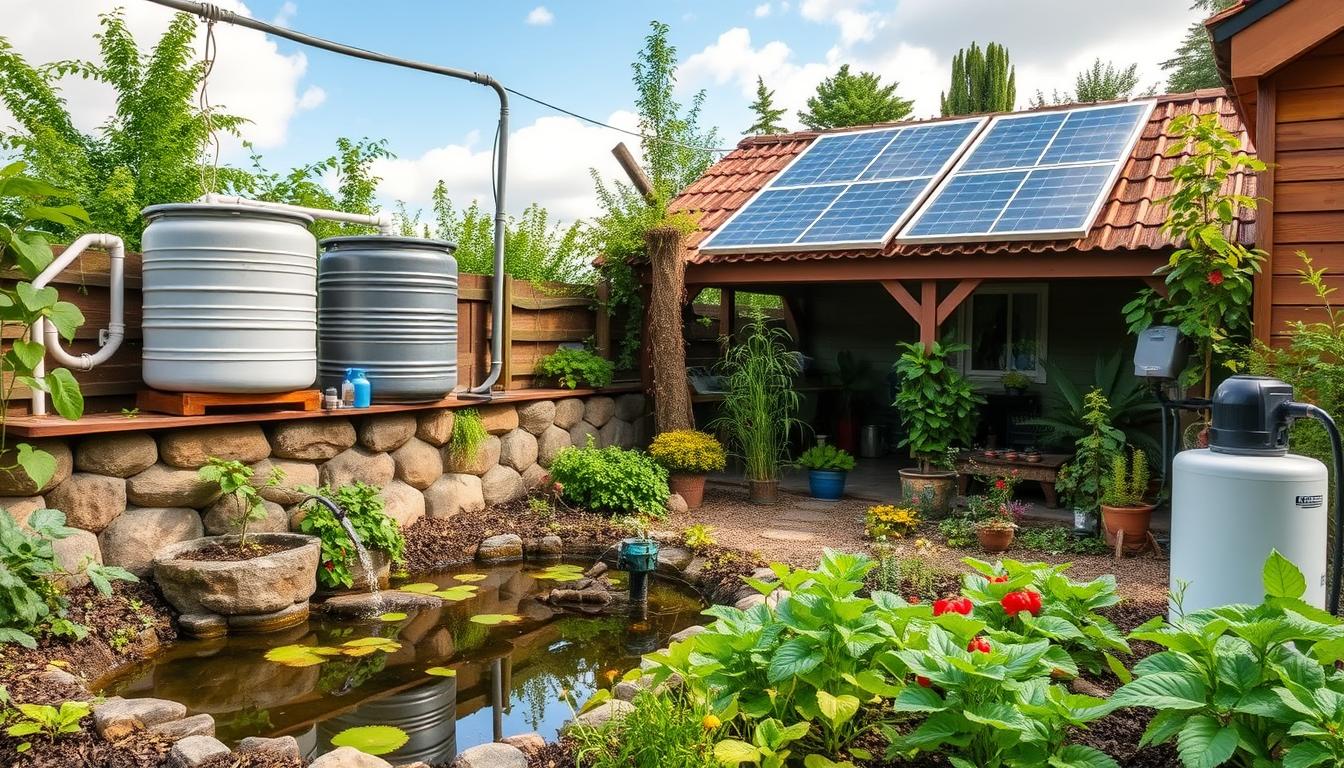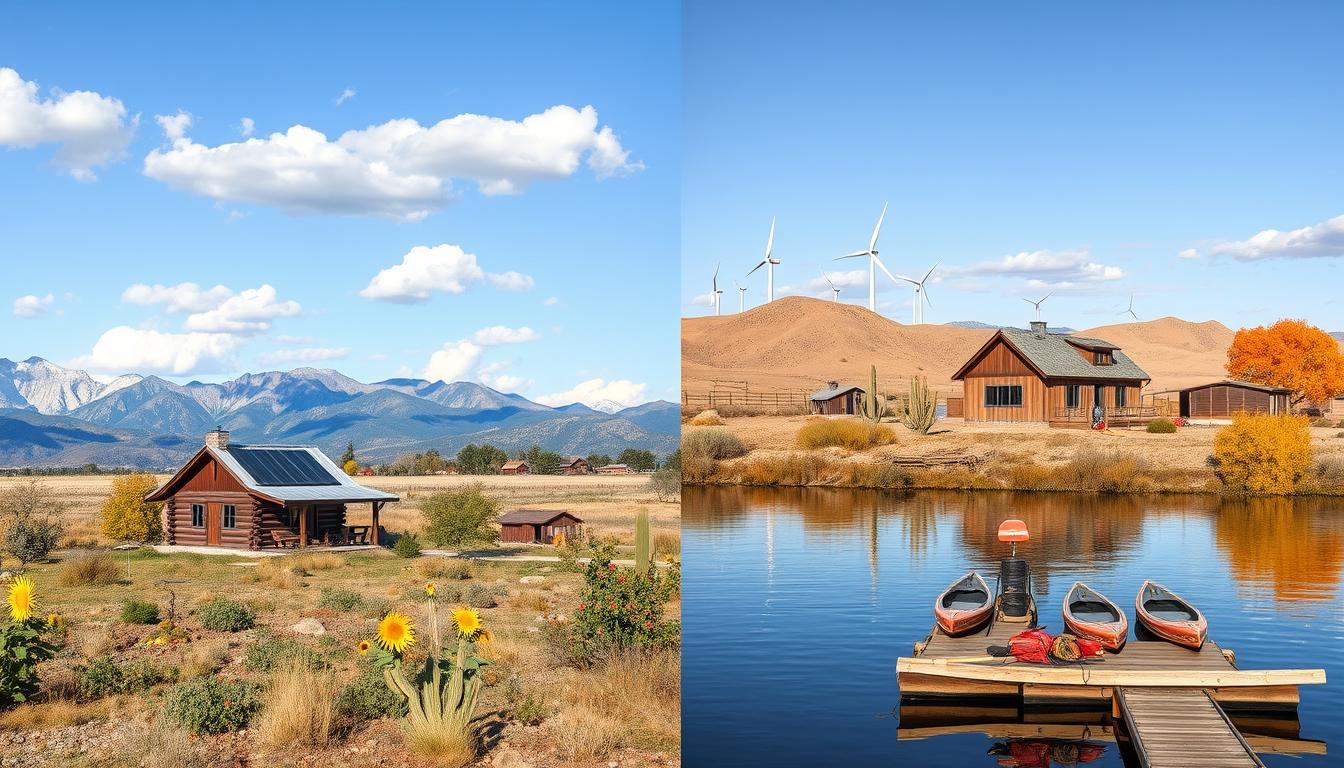Having a steady food supply is key to getting through emergencies and surviving long-term. This article will cover the best ways to build and manage a food stockpile. We’ll talk about why long-term food storage is important and how to keep food fresh for a long time. By the end, readers will know how to make a strong food supply for their families.
Key Takeaways
- Discover the benefits of building a long-term food stockpile for emergencies and disasters.
- Learn how to select the right shelf-stable foods that provide optimal nutrition and longevity.
- Understand the importance of proper packaging and storage environments to ensure the longevity of your food supply.
- Develop strategies for rotating and replenishing your food stockpile to maintain freshness and nutritional value.
- Prepare for power outages and other emergency situations by learning how to create an optimal storage environment.
Understanding the Importance of Long-Term Food Storage
In today’s world, survival skills and being prepared are more important than ever. With natural disasters, economic issues, and supply chain problems happening more often, having a good food pantry is key. It’s not just for convenience, but a vital way to protect you and your family.
Why Prepare for Emergencies and Disasters
Emergencies and disasters can happen suddenly, disrupting our daily lives. They can lead to food shortages quickly. Having non-perishable, shelf-stable foods in stockpile means your family can still eat well when regular food sources are cut off.
Benefits of Maintaining a Food Stockpile
- Peace of mind: Knowing you have food for emergencies can reduce stress and worry.
- Financial savings: Buying food in bulk and storing it can save you money over time. You won’t have to worry about high prices or shortages.
- Self-reliance: A full pantry makes you less dependent on others for food. This is very useful when the food supply chain is disrupted.
Understanding the value of long-term food storage helps you improve your survival skills and preparedness. It makes you a more confident prepper. A bit of planning now can greatly help protect your loved ones later.
Essential Principles of Food Preservation
Having a well-stocked pantry is key to being prepared. But just storing non-perishable items isn’t enough. You need to know how to keep your food safe and nutritious for a long time.
Keeping the right temperature is a basic rule of food preservation. By controlling the temperature where you store food, you can make many foods last longer. You need to keep perishable items in the fridge or freezer. For non-perishable goods, a cool, dry place is best.
Getting moisture out of food is also vital. Dehydrating or freeze-drying foods removes water. This stops harmful bacteria and mold from growing. These methods make foods last longer and are easier to store.
- Temperature control
- Moisture removal
- Use of preservatives
Using preservatives can also help keep food fresh for a long time. Things like salt, sugar, and artificial additives stop bacteria and oxidation. This keeps your food safe and fresh.
“The key to successful long-term food storage is understanding and implementing the right preservation techniques for your specific needs.”
Learning these key principles of food preservation helps you build a strong food stockpile. This stockpile can support you and your family in uncertain or emergency situations.

Selecting the Right Foods for Long-Term Storage
Choosing the right foods is key when planning for food storage and preparedness. It’s important to pick foods that last long and are nutritious. This is crucial for anyone looking to store food for later.
Shelf-Stable Foods and Their Benefits
Shelf-stable foods are essential for a good pantry. They include grains, legumes, canned goods, and dehydrated items. These foods can last for years if stored right. Here’s why they’re great for your food storage:
- They last a long time, making them a reliable food source in emergencies.
- Many shelf-stable foods keep their nutrients well, keeping your stockpile nutritious.
- They’re easy to prepare, which is a big plus in emergency situations.
Nutritional Considerations for Stockpiling
It’s not just about how long food lasts or how easy it is to prepare. Keeping your food stockpile balanced and nutritious is also key. Here are some tips for building a healthy stockpile:
- Include different protein sources like canned beans, lentils, and tuna for a balanced diet.
- Add whole grains like brown rice, oats, and quinoa for complex carbs and fiber.
- Have a variety of fruits and vegetables, both fresh and canned, for vitamins and minerals.
- Don’t forget healthy fats like nuts, seeds, and nut butters for overall health.
By choosing shelf-stable foods that meet your family’s nutritional needs, you can create a food storage plan. This plan will give you long-term food and keep you well-nourished.
“The key to effective food storage and preparedness is to focus on shelf-stable, nutrient-dense foods that can withstand the test of time.”
Proper Packaging and Containers for Food Storage
Choosing the right packaging and containers is key for keeping food fresh and safe for a long time. The right choices help keep your food safe and nutritious for emergencies or hard times.
Airtight and Moisture-Proof Packaging Options
Stopping air and moisture from getting to your food is crucial for keeping it fresh. Here are some top packaging options:
- Mylar bags: These bags block air, light, and moisture. They’re great for storing grains, dried foods, and more.
- Canning jars: Glass jars with tight lids are a dependable way to store foods like fruits, veggies, sauces, and preserves.
- Vacuum-sealed bags: These bags remove air, keeping foods fresh longer and keeping moisture and pests out.
Think about what you’re storing and your storage conditions when picking packaging. Good sealing and storage are key to keeping your food safe and fresh.
“Proper packaging and containers are key to maintaining the quality and nutritional value of your food storage. Invest in high-quality, airtight options to extend the shelf life of your preparedness stockpile.”
Build and Maintain Food Stockpile
Being prepared is key to keeping your family safe during emergencies. Creating a food stockpile is a big part of that. By planning carefully, you can make sure you have enough food for your family. This gives you peace of mind and a steady source of food.
First, figure out how much food you need based on your family size and eating habits. Aim to have enough non-perishable items for 3-6 months. This helps you survive if there are supply chain problems or emergencies.
- Start adding to your stockpile by buying small amounts of shelf-stable foods regularly. Think about canned goods, dried beans, rice, and powdered milk.
- Keep your food fresh by using the oldest items first. Replace them with new ones to keep your stockpile fresh.
- Organize your food so it’s easy to find and check expiration dates. Label and date everything, and keep a list of what you have.
- Plan your budget for food prep and look for ways to save money. Consider buying in bulk, during sales, and with discounts.
By following these steps, you can build a strong food stockpile. This will help your family when you need it most. Remember, being a prepper means being ready for anything, not just stockpiling food.
“A well-stocked pantry is the foundation of self-reliance and resilience.”
Rotation and Replenishment Strategies
Keeping a well-stocked preparedness pantry is key. It’s also vital to have a plan for rotating and restocking your food. This keeps your stockpile fresh and nutritious. It also prevents wasting valuable resources.
Keeping Track of Expiration Dates
Tracking expiration dates is a key part of managing your food stockpile. Here’s a simple way to do it:
- Label each item with the purchase and expiration dates
- Keep a detailed inventory list with this info
- Check expiration dates often and use the oldest items first
This method ensures your preparedness supplies are always fresh and ready for emergencies.
Adding new items to your stockpile is also important. Use a “first in, first out” rule. Put new items at the back and use older ones first. This keeps your food stores fresh and reduces waste.

“Proper food storage and rotation is the foundation of any successful preparedness plan. It’s not just about stocking up, but ensuring that what you have is always ready to use.”
By using these simple strategies, you can be sure your preparedness pantry is always ready for emergencies.
Creating an Optimal Storage Environment
When it comes to food storage and preservation, the environment is key. Keeping the right temperature, humidity, and light levels is crucial. This ensures your stockpile stays fresh and ready for emergencies.
Temperature Control
The best temperature for storing food is between 50°F and 70°F. If your food gets too hot or cold, it can spoil faster. Use a thermometer to check the temperature and adjust it if needed.
Humidity Regulation
Too much moisture can cause mold and bacteria to grow. On the other hand, dry food can become stale. Keep humidity between 30-50% to avoid these problems. Use dehumidifiers or desiccants to control moisture in your storage area.
Minimizing Light Exposure
Light can harm many foods, especially those with fats and vitamins. Keep your food in a dark, cool place. Use containers or shelving with doors to block light and keep your food fresh.
By focusing on these factors, you can make a great storage space. This will help keep your food safe for a long time.
“The key to successful long-term food storage is controlling the environment. Temperature, humidity, and light exposure can make or break your preparedness efforts.”
Preparing for Power Outages and Emergency Situations
As a prepper, getting ready for power outages and emergencies is key. When the power goes out, it can make it hard to keep your food safe. Having a backup plan is vital. A reliable generator or other power source can keep your fridges and freezers running. This keeps your food safe.
It’s important to have a stockpile of non-perishable and ready-to-eat foods too. Things like canned goods and dried foods can feed you when you can’t cook normally. Also, planning how to cook and share your food can keep your family fed and comfortable.
It’s important to check and update your emergency plan often. Your family’s needs and the resources you have can change. Making sure your food stockpile is still good and easy to get to is key. By being alert and taking action, you can make sure your family stays well-fed, even when things get tough.







